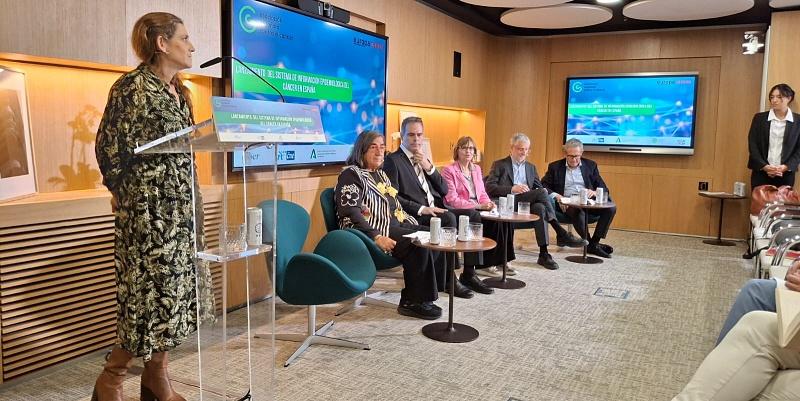Spain's first cancer epidemiology registry 'is a great example of collaboration'
The Cancer Epidemiological Information System in Spain (SIEC) was born, the first method that centralizes the epidemiological indicators of this disease in Spain and specifically processes data from autonomous communities.According to Ramón Reyes, president of the Spanish Association Against Cancer (AECC), the creation of the new platform is "a wonderful example of collaboration" that puts an end to the differences in criteria and archives of oncological information that prevail in the Spanish territory, given that there are provinces that have records of this type of data, and others do not, according to Reyes.
"The information does not come from any government, but as a society, and the information about the increase of cancer and the resolution of great inequality and the increase of cancer from this information. For Reyes, initiatives like Clipper" stop filling our mouths "with the phrases that" people in the middle "with the phrases that" people in the middle "were not given" information "in this case.
Evaluating the impact of health policies
In fact, SIEC not only identifies pathological trends, but also guides experts in evaluating the impact of health policies and developing strategies for prevention, early diagnosis and treatment, which brings tangible benefits to patients, experts and researchers.Thus, this platform is a strategic starting point for a uniform knowledge of the trends of the main indicators of cancer in Spain.
The AECC itself is represented by the Epidemiology and Public Health of the Network Biomedical Research Center (CIBERESP) - Carlos III Health Institute (ISCIII) -, the National Epidemiology Center of ISCIII, the Andalusian School of Public Health (EASP) and the Spanish Network of Cancer Registry.SIEC is the first national information repository and Integrates institutionally and systematically updated indicators on the burden of tumor pathology in Spain at regional level.Its development reflects unprecedented advances in epidemiological surveillance and public health policy planning in the field of oncology.
Incidence, Proliferation, Mortality and Survival
In the new registry, data on incidence, prevalence, mortality and survival are presented in a uniform, standardized and publicly accessible form, divided by sex, age, cancer location and independent community.
Furthermore, it is a system that integrates epidemiological indicators through interactive visualization, which facilitates access to information and makes SIEC a key tool to improve data-based decision-making, reduce spatial disparities, and promote transparency and equal access to cancer information.
Search by cancer type or risk factors
IN THIS WAY, THE JOINT DEPARTMENT OF ELECTIONS, THE DIRECTORATE OF ELECTIONS, THE DEPARTMENT OF CIVIL HEALTH, THE CLICK HERE INDUSTRY, THE CITIZEN SCIENTIFIC, ARE APPLYING THIS INFORMATION.The platform makes it possible to search by cancer type or risk profile.
En este sentido, el SIEC se consolida como un portal de divulgación científica y sanitaria que va dirigido no sólo a la comunidad investigadora, sino también a todos los actores implicados en el diagnóstico, tratamiento, prevención y planificación sanitaria en torno a las dolencias tumorales. Asimismo, constituye un sistema que, además de generar información de enorme interés para la población general y las asociaciones de pacientes, sirve para estimular la búsqueda de información, promover estilos de vida saludables y situar la lucha contra el cáncer y sus distintas dimensiones en la agenda pública.
"Having a qualitatively updated, integrated and disaggregated information system like SIEC allows us to have a more complete view of the impact of cancer in Spain and improve the response of public health and research", argues Mª José Sánchez Pérez.Both experts serve as coordinators of CIBERESP's Cancer Surveillance Subprogramme (VICA).








